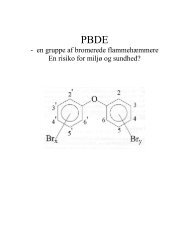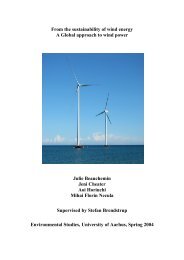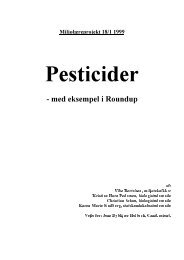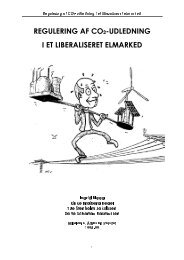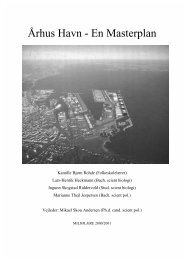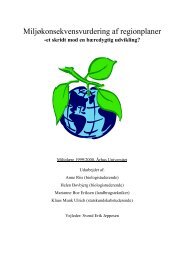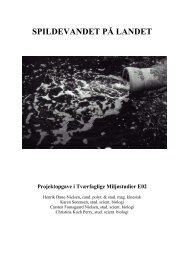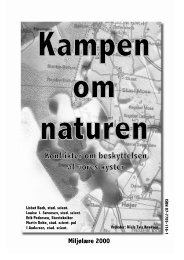University of Aarhus ECOTOURISM AS A WAY TO PROTECT ...
University of Aarhus ECOTOURISM AS A WAY TO PROTECT ...
University of Aarhus ECOTOURISM AS A WAY TO PROTECT ...
You also want an ePaper? Increase the reach of your titles
YUMPU automatically turns print PDFs into web optimized ePapers that Google loves.
Ecotourism as a sustainable way to protect nature<br />
3.2.4. Wildlife in Kruger National Park<br />
KNP is the only national park in Africa that does not have a deficit. Due<br />
to this it helps financing other national parks in Africa. But why is the park so<br />
economically strong<br />
The National Park <strong>of</strong>fers: “The drawing car, the game which includes,<br />
according to Kruger’s <strong>of</strong>ficial list, 29,142 zebras, 2,314 hippos, 250-300<br />
cheetahs, 4,600 giraffes, 3,150 kudu, 1,425 waterbuck, 350-plus wild dogs, more<br />
than 500 species <strong>of</strong> birds, and all the “big five”: elephants (7,834), rhinos (220<br />
black and 1,871 white), leopards (600-900), Cape buffalo (15, 253), and lions<br />
(1500-plus) “ (Honey, 1999). In relation to tourists services “There are eight<br />
entrance gates, a network <strong>of</strong> some 2600 km <strong>of</strong> tarred and gravel roads, 24 rests<br />
camps <strong>of</strong>fering a variety <strong>of</strong> accommodation and camping facilities. The Kruger<br />
has 4200 beds, and with day visitors, can accommodate around 5000 visitors at<br />
any time. The management has imposed a limit <strong>of</strong> 1 vehicle per km <strong>of</strong> road at<br />
peak periods.<br />
The Kruger National Park takes an unashamedly populist approach,<br />
<strong>of</strong>fering people comfort and easy access to wildlife. There is little <strong>of</strong> the classic<br />
African safari left in the Kruger. Despite the massive tourist presence, the rest<br />
camps, roads and viewing bands that run alongside them, occupy only some 4<br />
per cent <strong>of</strong> the total area <strong>of</strong> the park. The remaining area is unspoilt and left to<br />
nature.” (Roe, et al, 1997).<br />
3.2.5. Human influence on the wildlife<br />
Human disturbs the animals directly and indirectly. Although tourists<br />
behave respectfully to wildlife, there are some kinds <strong>of</strong> animals, which need an<br />
quiet environment or who are just shy as cheetahs. Human presence can cause<br />
very important problems in cheetahs due to the fact that they are used to hunt at<br />
day in contrast to lions, who are nocturnal hunters. It has been shown that during<br />
64




